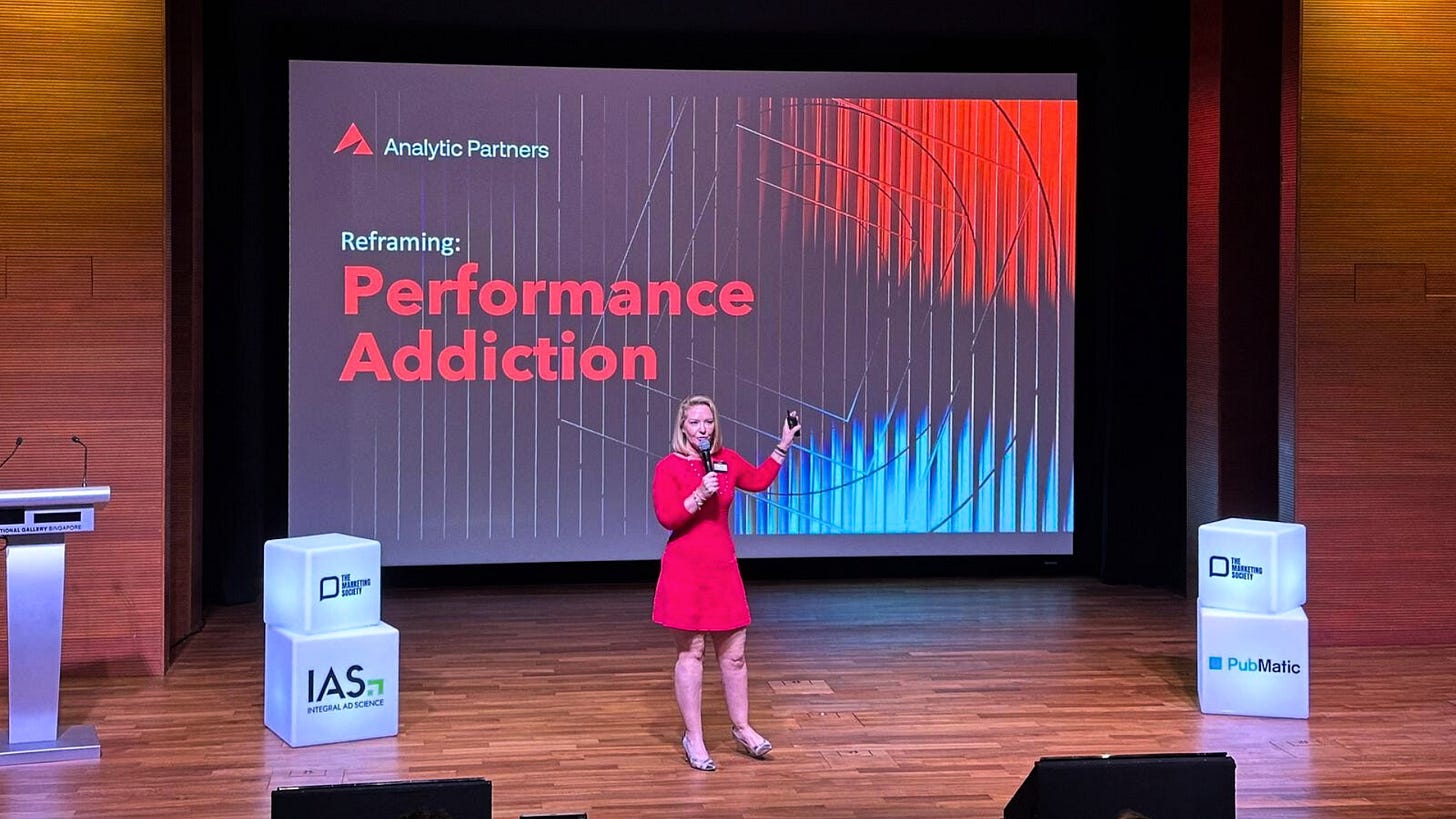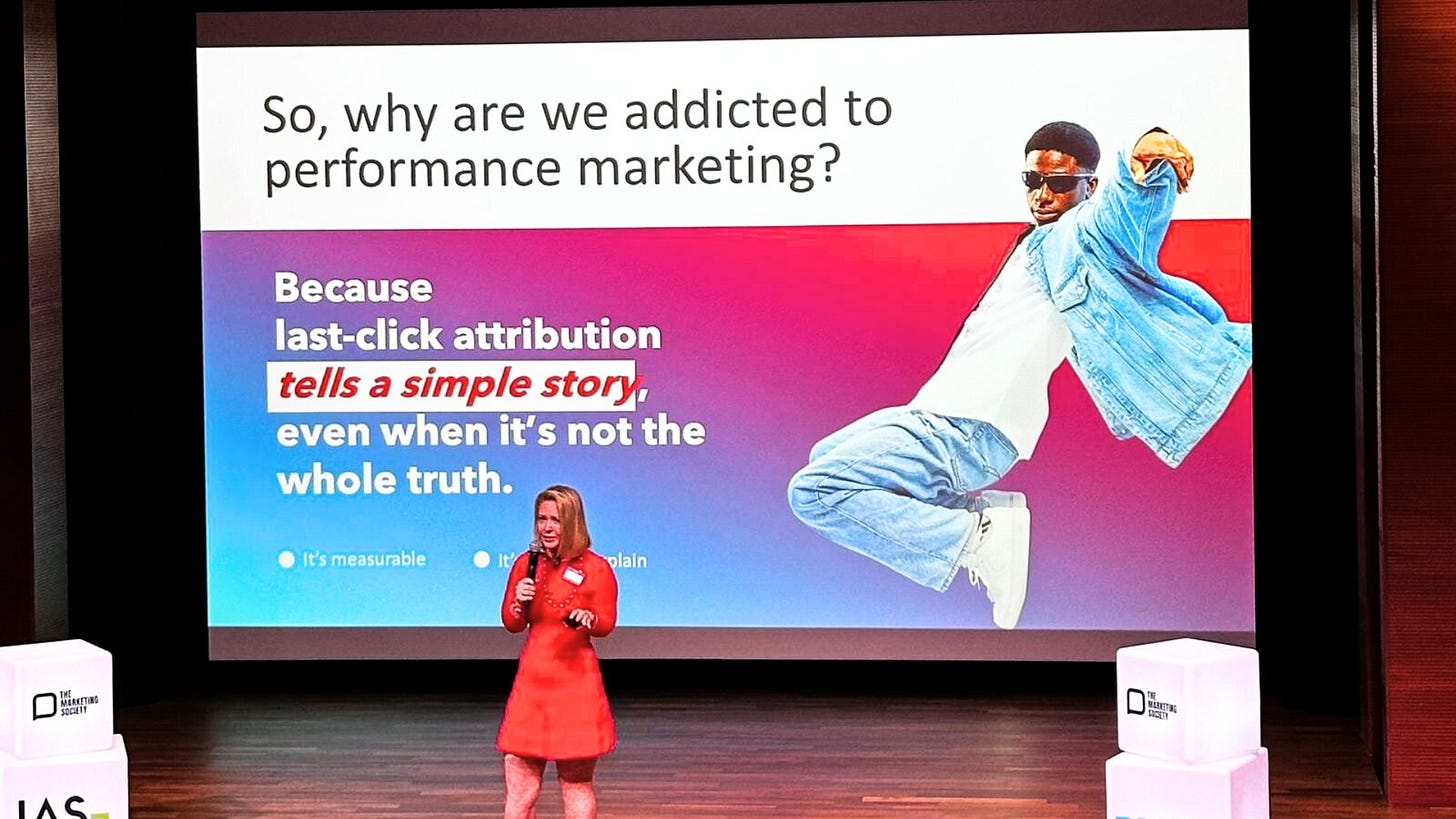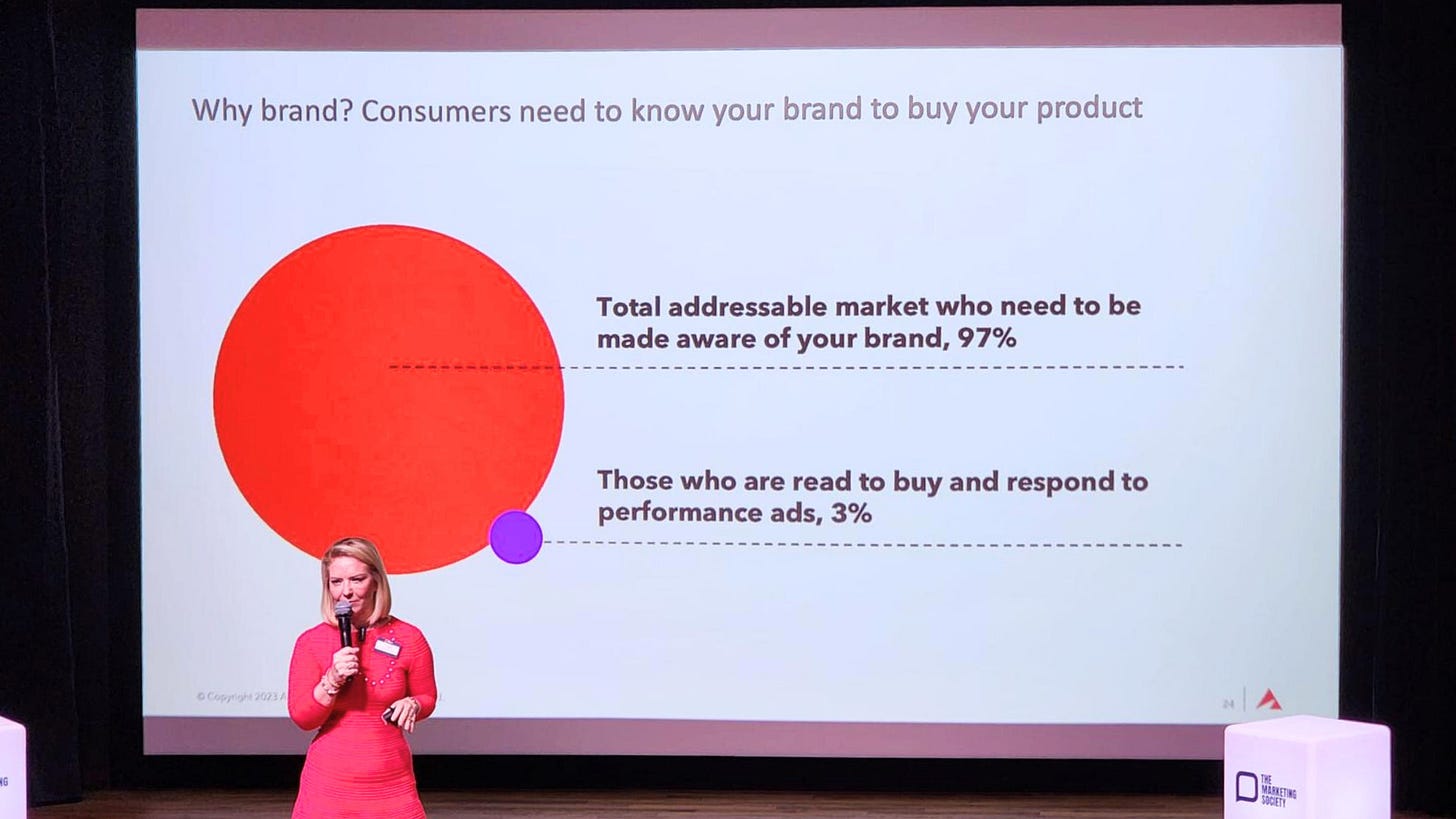Beyond the Click: Reclaiming Marketing Strategy in APAC’s Performance-Obsessed Landscape
All the best bits from my Digital Day keynote for The Marketing Society
When I say "we are digital-first," most marketers nod in agreement. But here in Asia Pacific, we're more than that - we’re mobile-first. And in a mobile-first world, performance marketing has become our default, our comfort zone, our addiction.
I understand it - I've lived it. I’ve been on the client side, leading marketing in this region for major brands, constantly under pressure to defend budgets to CFOs and CEOs. I've been affectionately called the “budget fairy” because somehow, I always managed to get what we needed. But I know that the easiest way to secure marketing dollars is by leaning into performance marketing. Why? Because it’s simple, measurable, and easy to explain in a boardroom.
But here's the problem: it’s not the full story.
Why We’re Addicted to Performance Marketing
In APAC, many of us have allocated over 50% - sometimes even 90% - of our budgets to performance marketing. China reports figures as high as 76%. And honestly, I’ve done it too. At one point at UPS, performance marketing took up 95% of our spend. But the issue isn’t whether performance marketing works (it does!). It’s how we define success and what we might be missing when we rely on it alone.
The last-click attribution model that fuels performance marketing tells a compelling story - but an incomplete one. Imagine buying a car. You’ve seen ads, read reviews, heard recommendations, and then one day, you pass a dealership with a giant inflatable man waving out front and decide to walk in. According to last-click attribution, it was the inflatable man that sold you the car.
It’s absurd. And yet, that’s how many marketers are directing investment decisions.
The Invisible 59%
At Analytic Partners, we measure everything — media, pricing, competitors, inflation, even the weather. And our data shows a disturbing truth: 59% of marketing touchpoints are invisible or unusable in current measurement models.
Think about it:
Over 50% of people use ad blockers.
36% of web traffic lacks referral data.
54% of users opt out of cross-app tracking.
In APAC, walled gardens like WeChat, LINE, and Kakao create major blind spots.
This means you are likely not seeing the majority of what’s influencing your customers. And what you can’t see, you can’t optimize or defend in a budget conversation.
Even Meta’s own research shows that advertisers under-attribute 31% of value to their ads. That’s how broken the model is.
Brand + Performance = Exponential ROI
I’m not here to bash performance marketing. I believe in it. But it’s not either/or. It’s brand AND performance.
Our ROI Genome data shows that by integrating brand into your mix - even modestly - you can boost overall ROI by up to 90%. Conversely, going performance-only means you could be leaving up to 40% of revenue on the table.
We recommend that at least 30% of your budget be dedicated to brand building. The sweet spot, depending on your category, is between 40–60%. I know that’s tough in APAC where CFOs often want proof before they’ll sign off. But it’s our job as CMOs to shift the narrative from clicks to commercial impact.
You’re Targeting 3% of the Market
Here’s something that hit me hard when I first saw the data: at any given time, only 3% of your market is actively ready to buy. Yet, in many organisations, 70% of the budget is targeting that 3%.
What about the other 97%?
If we don’t invest in brand, we’re not cultivating the future demand pipeline. We’re not building trust or familiarity. We're showing up when they're ready to buy, without ever having said “hello” before. That’s not a strategy - it’s wishful thinking.
Brand Messaging Wins - Even in Performance Channels
Here’s another insight from our research: brand messaging outperforms tactical messaging 80% of the time, even in performance environments like paid search and display.
At UPS, I saw this first-hand. Our generic “price-led” ads never performed as well as those that told a more emotional, brand-led story. Why? Because people buy emotionally and justify rationally—even when clicking on a search ad.
And here’s more good news: you don’t need endless budgets for new creatives. We tested over 51,000 creatives and found only 14 wore out. That 10 + 4 = 14 out of FIFTY ONE THOUSAND. The rest continued to deliver strong ROI over time. So stop swapping ads just because you're bored — consistency works.
From Tactician to Strategist
Marketing controls only about 5-20% of what drives a company’s results. The rest? Product, pricing, seasonality, distribution, weather - you name it.
If your ice cream sales dip in the UK in January, no amount of YouTube pre-roll will fix that. But if you understand all the external variables at play, you can start to have more strategic conversations with your CFO or CEO.
That’s how we elevate the role of marketing—from tactical execution to business strategy.
Your CMO Homework
Before I go, I’ll leave you with a few questions to ask your team and agencies this week:
Is our search cost rising faster than our search volume?
How much of our brand activity is tracked—and how much is invisible?
Are we testing brand messaging in performance channels?
What percentage of our budget is allocated to long-term brand building?
Do we understand the external forces impacting our results (weather, inflation, competitive pricing)?
Let’s move beyond the click. Let’s stop being performance monkeys and start acting like the strategic leaders we are.
It’s time for CMOs in Asia Pacific to drive the brand conversation—because when we do, performance gets better too.





